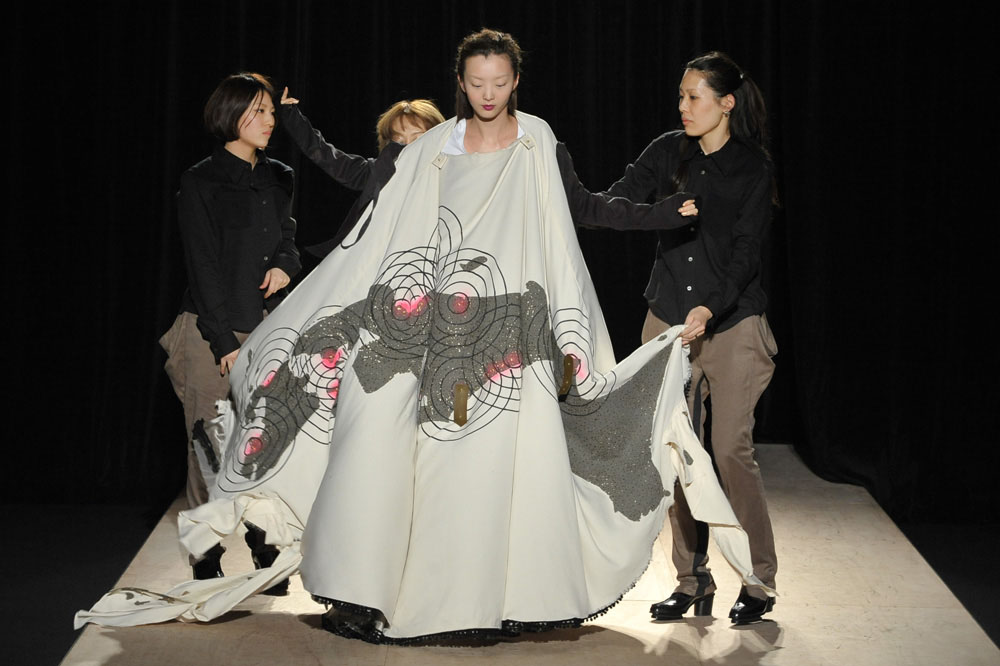Four days after the Great Eastern Japan Earthquake on March 11, Japan Fashion Week, scheduled to take place March 18-25, was unceremoniously canceled with an announcement on its official website. It sent a small wave of panic through the industry as it became increasingly unclear how the fashion season in Tokyo would take shape. Six drawn-out weeks and only a handful of independently held shows later, fashion's 2011 fall/winter season in Tokyo drew to a close.
Sponsored in part by the national and Tokyo metropolitan governments, cancelation was the only decision JFW's organizers could make at a time when Japan was exercising restraint. Just 11 days after the earthquake, however, young designer Olga of Etw. Vonneguet bravely showed her mini-collection to a somewhat uneasy-looking crowd, initiating the sentiment that, for the industry to survive, the show really must go on. About 14 designers did choose to independently show collections, though this was less than a third of the 50 or so who normally would have participated in JFW.
Despite fewer shows taking place, there were some interesting debuts, such as by Christian Dada, who presented an aggressive collection of part punk and part opulence, replete with skeletal wooden headpieces in true avant-garde style. The collection was representative of a lot of the brands that did go ahead with runway shows, many of which displayed aesthetics from the far-left side of creativity. Nozomi Ishiguro's pieces were fun, Macaronic's on the quirky side, and some, such as those of Somarta and shoe designer Noritaka Tatehana, were classic but unique. Anrealage presented one of its strongest collections to date, with pixelated floral designs and painstakingly detailed patchwork coats. And most of the pieces, despite being winter collections, were extremely colorful and bright.



















With your current subscription plan you can comment on stories. However, before writing your first comment, please create a display name in the Profile section of your subscriber account page.